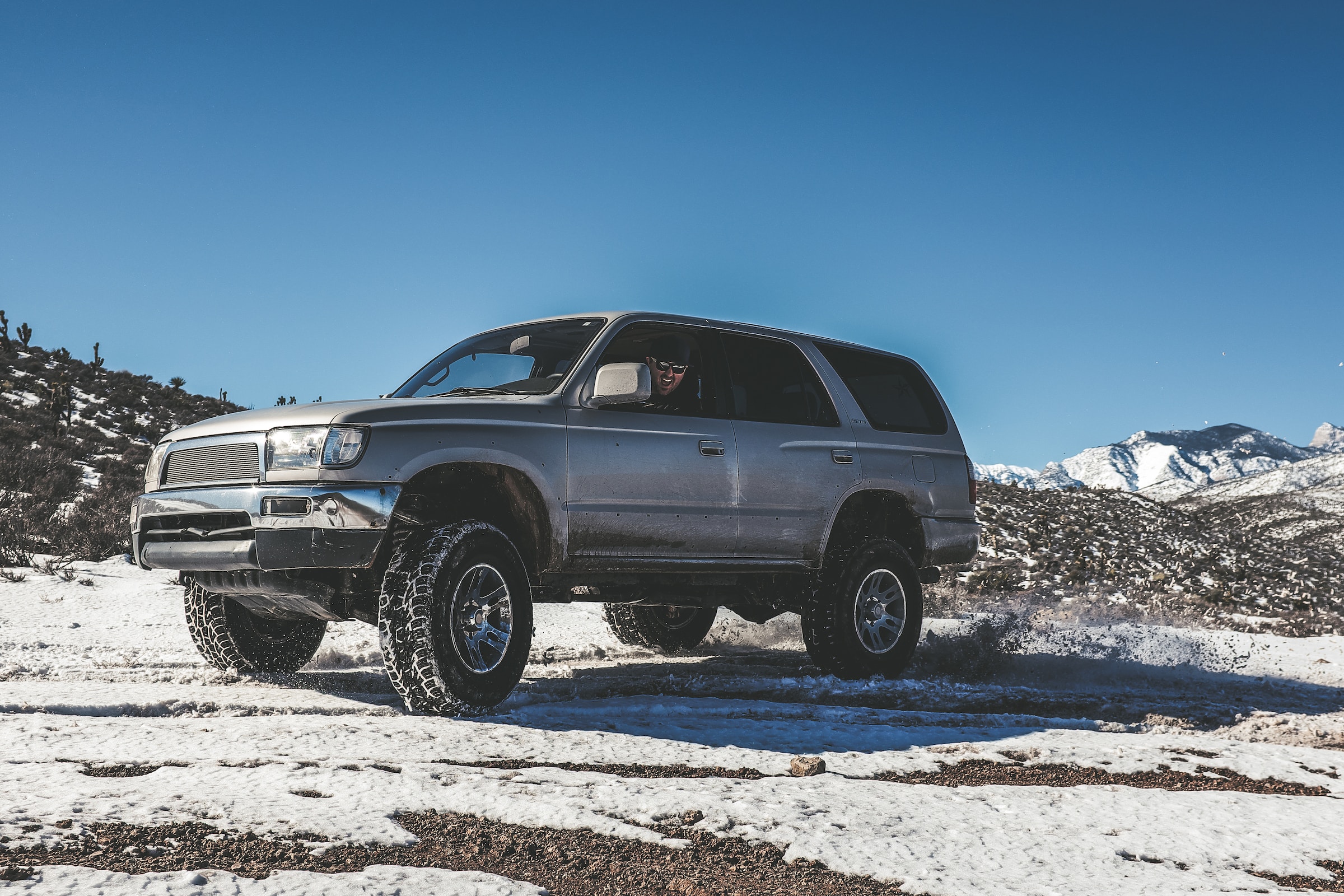When it comes to how a vehicle’s power gets to the road, there are various drivetrain configurations available. Each system has its advantages and trade-offs, influencing factors like traction, handling, and fuel efficiency. Understanding the differences between all-wheel drive (AWD), four-wheel drive (4WD), front-wheel drive (FWD), and rear-wheel drive (RWD) can help you make an informed decision when choosing your next vehicle.

Front-Wheel Drive (FWD)
FWD is a common drivetrain layout where the engine’s power is directed solely to the front wheels. This setup is prevalent in smaller cars and many mainstream vehicles.
Advantages
- Efficiency: FWD vehicles tend to be more fuel-efficient due to their simpler design and lighter weight.
- Better Traction in Slippery Conditions: With the weight of the engine over the front wheels, FWD cars typically perform well in slippery conditions like rain or light snow.
- Cost-effective: FWD setups are generally less expensive to manufacture and maintain, making them more budget-friendly for consumers.
- Easier to Manage: Due to its propensity of understeer when pushed hard, it’s an easier car to handle compared to those that are prone to oversteer.
Limitations
- Handling: FWD cars can experience understeer, where the front wheels lose traction and slide outward during aggressive cornering.
- Performance: In high-performance applications, FWD setups may not deliver the same level of handling or acceleration compared to RWD or AWD counterparts. They struggle to put down the power as weight gets shifted to the rear under acceleration.
Rear-Wheel Drive (RWD)
RWD sends the engine’s power to the rear wheels. Historically common in larger vehicles and sports cars, it’s now found across various vehicle types.
Advantages
- Balanced Handling: RWD cars often provide a more balanced weight distribution, leading to improved handling and stability. With an engine in the front and the driveline sending power to the rear, achieving a more centered weight distribution is easiest with a RWD layout.
- Performance: Many performance-oriented vehicles use RWD for enhanced acceleration and dynamic handling. Unlike in a FWD car, weight is transferred to the rear, increasing grip under acceleration. This layout is ideal for drivers looking to improve their skills.
Limitations
- Traction in Poor Conditions: RWD cars can struggle for traction in slippery conditions, requiring skillful driving or additional traction control systems.
- Fuel Efficiency: Generally, RWD vehicles might have slightly lower fuel efficiency due to their drivetrain’s mechanics and weight distribution.
All-Wheel Drive (AWD)
AWD systems continuously distribute power to all four wheels, automatically adjusting traction as needed. They’re common in SUVs, crossovers, and performance cars.
Advantages
- Enhanced Traction: AWD provides superior traction in various road conditions, improving stability and handling on slippery surfaces.
- Adaptability: AWD systems can adjust power delivery to specific wheels, optimizing traction and stability in real-time.
- Versatility: AWD is highly versatile, offering both on-road performance and off-road capabilities.
Limitations
- Complexity and Cost: AWD systems are generally more complex and costly to manufacture and maintain than FWD or RWD setups.
- Potential Fuel Efficiency Impact: Due to the added weight and mechanical complexity, AWD vehicles might have slightly lower fuel efficiency compared to their FWD counterparts.
Four-Wheel Drive (4WD)
4WD systems are typically found in trucks and off-road vehicles. Unlike AWD, 4WD can usually be manually engaged or disengaged by the driver.

Advantages
- Off-Road Capability: 4WD excels in challenging off-road terrains, offering exceptional traction and torque to all four wheels. They typically offer low and high gear sets to make them more capable at technical offroading.
- Versatility: The ability to switch between 2WD and 4WD mode allows for better fuel efficiency when 4WD isn’t necessary.
Limitations
- Complexity: Manually operated 4WD systems can be more complex to use, requiring driver input to engage or disengage, which might not be suitable for all drivers.
- Potential Overkill for Regular Use: For everyday driving on paved roads, 4WD might not provide significant benefits and can lead to increased fuel consumption.
Choose a Layout That Suits Your Needs
Choosing the right drivetrain depends on your driving needs, environment, and personal preferences. FWD offers efficiency and traction in everyday situations, while RWD focuses on performance and handling. AWD combines elements of both for versatile handling in various conditions.
Meanwhile, 4WD shines in off-road scenarios but might be excessive for typical road driving. Knowing the limitations of your vehicle can prevent you from getting into a car accident by overestimating the capabilities of your vehicle. According to the Denver car accident attorney at Dormer Harpring, this can leave the driver liable for an accident.
When considering a vehicle, understanding these drivetrain differences can guide you toward a choice that best suits your lifestyle, whether it’s navigating city streets, tackling off-road adventures, or seeking high-performance capabilities. Each drivetrain has its strengths and weaknesses, so finding the right balance is key to enjoying your driving experience to the fullest.
Article Last Updated: January 11, 2024.
